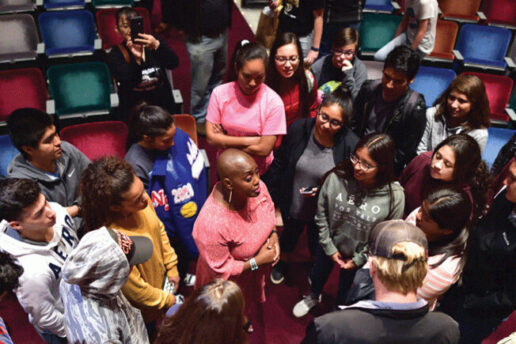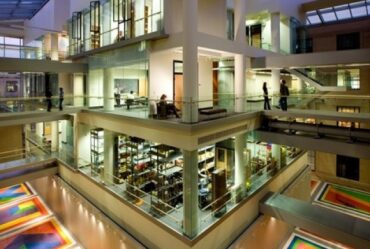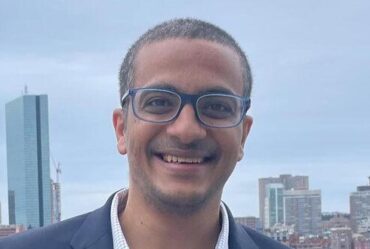
Report co-chaired by MIT professor cites need for “sweeping changes” in academic culture.
Undergraduate physics is in the midst of a boom: In the last two decades, the number of bachelor’s degrees awarded in physics in the United States has more than doubled, to a current all-time high. And yet, it’s clear that African-American students have been left out of this upward trend.
During the same period, African-American representation among physics bachelor’s degree earners has increased by just 4 percent, compared with a 36 percent increase in African-American undergraduates who have earned degrees in other physical sciences such as chemistry, engineering, and earth sciences.
Now a task force funded by the American Institute of Physics is calling for sweeping changes to the culture of physics in academia, in order to address this persistent underrepresentation. Following a two-year investigation, the National Task Force to Elevate African American representation in Undergraduate Physics and Astronomy, known as TEAM-UP, has released a report, titled “The Time Is Now: Systemic Changes to Increase African Americans with Bachelor’s Degrees in Physics and Astronomy.”
MIT News spoke with task force co-chair Edmund Bertschinger, who is a physics professor and the former Institute Community and Equity Officer at MIT, about the new report.
Q: What are the main findings from the task force’s investigation?
A: We found that the persistent underrepresentation of African-Americans in physics and astronomy is due to the lack of a supportive environment in many departments, and to the enormous financial challenges facing these students as well as the programs that have consistently demonstrated best practices in supporting their success. In particular, historically black colleges and universities have suffered a 50 percent decline in physics graduates over the last two decades, due mainly to financial hardship.
Many African-Americans who might otherwise pursue these fields are choosing majors that are perceived as being more supportive or rewarding. We also found wonderful departments that recruit and retain black students who go on to graduate school or high-paying jobs.
Q: What were some of the specific examples or anecdotes that you came across during this investigation, that in your view, emphasized the problem of African-American underrepresentation in physics and astronomy?
A: We surveyed and interviewed African-American students and centered them in our report. Some of their experiences were heartbreaking.
For example, one student said, “I’ve had two professors ask me why I’m in physics. They see how much I’m struggling. Like, ‘Why are you still a physics major? Why do you want to do this?’ Multiple times. It’s like, ‘Well, I’m here because this is what I want to do.’ They’re like, ‘You’re making your life difficult doing all this.’ It’s very discouraging when you hear [this].”
Unfortunately this is not an isolated incident. Discouragement from peers and faculty is one of the reasons many African-American students don’t persist in physics.
On the other hand, we visited departments that excel in retaining and graduating African-American undergraduates in physics. The faculty at those institutions — which included major research universities, smaller institutions, and colleges that serve black students — exemplified caring for students. I was especially impressed by the faculty of several departments we visited who emphasized student strengths instead of deficits, and who worked to build strong relationships enabling students to thrive through all hardships.
Q: The TEAM-UP task force is aiming to double the number of bachelor’s degrees in physics and astronomy awarded to African-American students by the year 2030. How is the team recommending that colleges and universities meet this goal?
A: This is not an engineering problem, it is a human problem. That means scientists need to embrace a new way of thinking, one that is informed by perspectives from the humanities and social sciences. The first step is to recognize that our professions have norms and values, which may be invisible to many of us, that either support or diminish the success of our students. We have many recommendations, but our top one is that faculty, department leaders, and professional societies take some time to consider the culture of their profession and organizations. The top-performing departments have done this and already follow our recommendations. If enough of the others do likewise, we will easily meet the goal.


